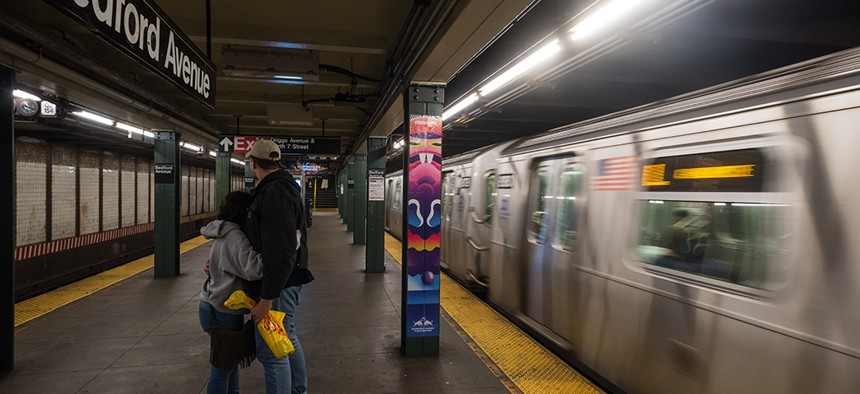When Andy Byford, president of the New York City Transit Authority, announced his new Fast Forward plan last month, we finally saw the price tag for fixing a broken system that has been racked by decades of inaction and disinvestment: more than $19 billion, and possibly as much as $37 billion. While this plan is daunting and costly, we should all be thanking Byford for proposing a plan that will actually address the core problems that have plagued our subways. However, Byford’s rhetoric around one part of his plan in particular – increasing accessibility – does not seem to have fully permeated through the NYCTA and the Metropolitan Transportation Authority. If it had, these agencies would examine their current repair and renovation projects and propose new accessibility plans for projects that are already or soon to be underway.
Station accessibility is just as big a problem for the MTA as broken signals or damaged tracks. If you’ve never thought about what it is like trying to navigate the New York City subway system with a disability, consider how hard it would be if you could only access 20 percent of the system’s stations. That is the daily crisis that an estimated 500,000 disabled New Yorkers deal with every day, including many in our districts. And that doesn’t even begin to touch the thousands of New Yorkers with strollers or small children who struggle to use the stairs every day. With over 350 stops to go until this gross inequity is fixed, it’s clear that we must begin to rectify things immediately.
That sense of urgency was why we held a rally last month demanding that the MTA start making things right, by including accessibility for all stations that lack it along the L line during its year-long shutdown planned for 2019. With commuters and trains out of the way for a year, this would be the perfect time to install elevators, when work could proceed more quickly and with less disruption to residents and customers alike.
These fixes would provide access to the disabled community at stations including Sixth Avenue and Third Avenue in Manhattan, and Broadway Junction and Metropolitan Avenue/Lorimer Street in Brooklyn. So instead of seizing this golden opportunity, why is the MTA squandering this chance?
Instead of dedicating the necessary resources upfront when a credible solution presents itself, the MTA is still trying to cut corners and rush projects through, just like it has in the past.
And this isn’t just about one project. The MTA’s Enhanced Station Initiative, which launched two years ago with the intended goal of bringing structural repairs and new electric and communications systems to 32 stations, is failing in more ways than one. While the stations in this project must be closed for half a year or more while repairs are completed – just like the L train – not a single one has received a new elevator. Cost overruns have also cut the number of stations receiving repairs to just 19, with the project often seeming to be focused more on cosmetic changes than critical infrastructure.
While Byford’s Fast Forward plan acknowledges these challenges, and commits to achieving “maximum possible accessibility” in the next 15 years, the MTA has yet to rectify projects that are rapidly approaching where accessibility not only makes sense, but would have minimal impact on subway riders.
Bringing these challenging reforms to existing projects shouldn’t be new for Byford, though. In 2015, when he was the chief executive at the Toronto Transit Commission, Byford helped to restore full funding for accessibility throughout the city’s transit network; the system is now expected fully accessibility by 2025.
We understand that reforming a bureaucratic disaster as large as the MTA will take Byford some time. But with these easy opportunities to increase accessibility rapidly approaching, time is running out to reverse MTA policies. The MTA must find the courage, and the city and state must find the funding, so that all stations in the L train shutdown and Enhanced Station Initiatives can receive elevator access. The MTA must also begin providing detailed reporting regarding the estimated cost and implementation of elevators at any station that undergoes a major construction or renovation project. Elevators may be difficult or challenging to build at certain stations, but in a city with 100-plus-story skyscrapers, it’s clearly not impossible.
We talk about the disaster facing our transit system if the trains don’t start running on time, but if Byford does not act now, hundreds of thousands of New Yorkers will continue to not have access to trains at all.

NEXT STORY: To crack down on illegal hotels, regulate Airbnb


